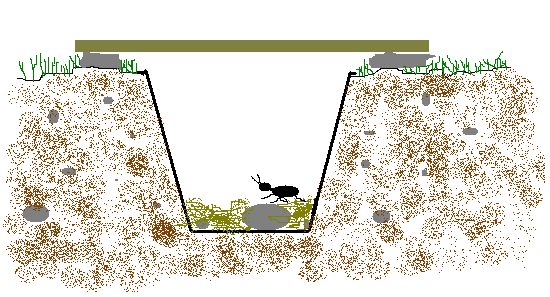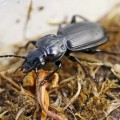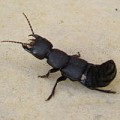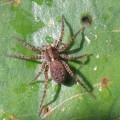One fun way to help you find more Mini-Beasts, particularly in your own gardens, is to use a pitfall trap. Wilf Powell has very kindly created these simple-to-follow instructions to help you build pitfall traps. (You can download the instructions here and print them.)

- Dig a hole in the soil in your garden.
- Take a large empty yoghurt or cream carton or a disposable plastic drinking cup and place it in the hole so that its rim is level with the soil surface.
- Insects and other mini-beasts walking over the soil will fall into the pitfall trap.
- Place some small stones and a little dry grass or leaves in the bottom of the trap for them to hide in but don’t put in too much or they will be able to climb out.
- Cover the trap with a piece of wood or tile, raised a little above the ground using a couple of stones so that the mini-beasts can crawl underneath.
- Set up the trap in the morning and check it that evening or set it in the evening and check it the next morning.
- After you have recorded the mini-beasts in the trap, release them back into the garden.
- Set up several traps around the garden to increase the chance of catching some interesting mini-beasts.
This could help you with the Garden Bug Hunt. Here are three of the common Mini-Beasts that you might catch in your Pitfall Traps.
- Ground Beetle
-
Ground beetles eat other insects. This is the Black Clock Beetle. It sometimes has red legs. There are 350 different ground beetles in UK.
- Rove Beetle
-
Rove beetles have short wing cases. Some rove beetles are only 2mm long. There are over 1100 different rove beetles in UK. This is the Devil’s Coach Horse. It is almost 3 cm long. The Devil’s Coach Horse will raise its abdomen and open its jaws as a threat.
- Wolf Spider
-
Wolf Spiders don’t build webs to catch prey, tThey hunt prey on the ground. They have excellent eyesight using 8 eyes. Some build burrows in the soil. Females carry their eggs in a silk bag attached to the end of their abdomen.





Pingback: Pitfall trap - Wild About Britain
Pingback: Jordans Mill Family Day: 18th June 2014 |
Pingback: Teach Your Kids to Love (and respect) Bugs! - Local Parent